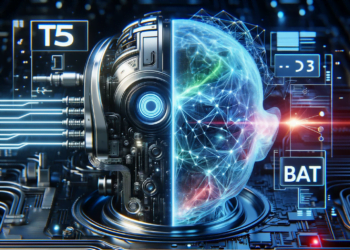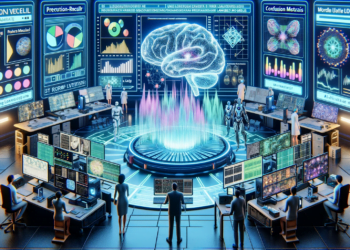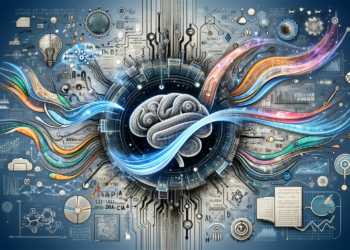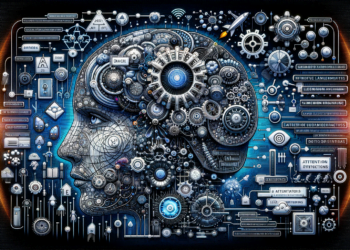Artificial intelligence (AI) has gone through various stages of development, leading to groundbreaking innovations in the field of natural language processing (NLP). In this wave, BERT (Bidirectional Encoder Representations from Transformers) emerged, a disruptive model that has redefined machine text comprehension. This model, introduced by researchers from Google AI in 2018, is distinguished by its Transformer-based architecture, which allows it to capture the bidirectional context of an entire text at each layer of its network.
Transformers: A Paradigm Shift in NLP
Transformers, introduced by Vaswani et al. in 2017, form the foundation of BERT. They utilize attention mechanisms that weigh the influence of different words in the representation of each word within a sentence. Unlike previous approaches, such as recurrent networks, this process is not necessarily sequential, allowing models to better capture contextual dependencies.
Bidirectionality as a Cornerstone
BERT employs a “masking” approach where it randomly hides parts of the text and attempts to predict these hidden words based on context. Unlike unidirectional approaches, which view the text from left to right or vice versa, BERT analyzes text in both directions simultaneously. This feature allows it to understand context more effectively, which is essential for tasks such as the disambiguation of meanings of polysemous words.
Pre-training and Fine-tuning: Two Key Stages
BERT is trained in two phases: pre-training and fine-tuning. During pre-training, the model learns contextual relationships from large volumes of text. Subsequently, in the fine-tuning phase, BERT specializes in specific NLP tasks by adapting to smaller, more specific datasets.
Significant Advances in Empirical Evaluations
BERT has set unparalleled standards in NLP benchmarks like GLUE, MultiNLI, and SQuAD, outperforming other pre-existing models in tasks such as natural language inference and reading comprehension. These results have been validated by a plethora of subsequent studies, solidifying its significance in the field.
Disrupting Task Stratification in NLP
Traditionally, NLP tasks have required models and systems specifically tailored for their purpose. BERT, with its fine-tuning capability, has shown that a single model can learn and perform effectively across multiple NLP tasks, from text classification to named entity recognition.
Practical Applications of BERT in Industry
In the industrial realm, BERT has been used to improve the quality of responses in search engines, virtual assistants, and recommendation systems, thanks to its ability to more accurately comprehend the intent behind queries and the content of documents.
Case Study: BERT in Search Engines
A case of great significance is the implementation of BERT in the Google search algorithm, which affected 10% of English search queries, according to Google. This enabled a more refined handling of prepositions and conjunctions in queries, significantly improving the relevance and precision of search results.
Overcoming and Complementing: The Emergence of Variants
The engineering behind BERT has inspired the creation of variants like RoBERTa, which optimizes the pre-training process, or ALBERT, which reduces the number of parameters to facilitate the training and use of these networks on limited resources while maintaining or even improving the performance of the original BERT.
Responsibility and Ethics in Language Models
Though the technical advances are remarkable, the ethical implications of language models must be considered. Neutrality, biases, and the ability to generate coherent and believable text raise questions about the responsible use of technologies like BERT. Transparency and the implementation of strategies to mitigate biases and abuse are essential in this context.
Looking Toward the Future: Ongoing Innovation
As BERT continues to be a relevant model in NLP, the field is progressing towards even more sophisticated models in terms of architecture, efficiency, and multi-tasking abilities. From Transformer-XL to models like GPT-3, the horizon of artificial intelligence promises innovations that will continue to challenge our current understanding of machine text comprehension.
Conclusion
BERT represents a milestone in NLP. Its bidirectional approach, advanced algorithms, and impressive results in specific tasks have sparked a cascade of research focused on improving the relationship between humans and machines through language. As new models are developed, it is crucial to keep a critical eye on the ethical implications and to balance the pace of innovation with a holistic view that includes both technical efficiency and social responsibility. The journey of AI is far from over, and BERT is just a glimpse of what the future holds.






















